When you begin your crochet journey there are likely to be many things that you’ll need to learn along the way. To help you navigate through these confusing waters, we’ve listed 17 top tips that will make the transition into your first project just that little bit easier. If you’re a seasoned crocheter, you’ll know all too well about these minor bumps in the road, but read on and you might just find some surprisingly helpful advice.
Yarn Control
Yarn control is super important, so try placing it inside a baby wipe container to keep it from rolling around. Gently poke the end of your yarn through the hole that the wipes came out of, and invest in extra storage once your stash gets bigger.
Easy Does It
While it’s tempting to start with a pattern that’s exciting to create but a little bit harder, you may end up frustrated, confused and eventually lose interest. It’s best to try a simple project instead and build on your skill set.
Yarn Count
There’s nothing more frustrating than running out of yarn mid-project, so before you start you should always work out how many rows your project requires, to see how much yarn you’ll need.
A Real Addiction
Yarn is addictive, therefore hoarding will be normal. You may realise that you’ll start visiting the craft store a lot more as your desire to create new makes increases.
Tangling Yarn
Tangled yarn will become a thing, and the process of untangling will be something that you’ll come to learn as you go from project to project. You’ll try your best to not do it often, but when it does occur, just sit back and enjoy the task.
Organisation Is Key
Keep your yarn organised, so you can spend less time searching and more time crocheting!
Use Scraps Wisely
Once you delve into your crochet projects, you’ll soon notice a yarn scrap pile start to develop… but don’t even think about throwing them away. You can use them up by creating mini pom poms or jewellery, or even tie pieces into bows before adhering them to a gift box.
Take Flight
Fancy flying with your crochet pattern in hand? While you won’t be able to take a pair of scissors on the plane, nail clippers are a great alternative.
Take A Break
Crocheting for long periods at a time can be hard on your hands and wrists, so make sure you take short breaks, ideally every 20-40 minutes. Stress balls are ideal for bringing back the circulation and will provide a great deal of comfort.
Build Your Skill Set
Don’t be afraid to experiment with a variety of crochet patterns once you begin to get more confident. Navigate your way through creating striped projects, changing stitches or customising things like sleeves and necklines.
Crochet Gatherings
Making friends with people who also crochet is a great way to expand your knowledge, and even if you are a seasoned crocheter, you may learn something new at each gathering.
Increase Your Hook Stash
Get to grips with using a variety of crochet hooks. Various projects call for different-sized hooks, so it’s best to buy them all in one go. This prevents having to delay a project owing to the fact that you may not have the right equipment.
Keep Pets At Bay
Playful pets can sometimes interfere with crochet projects, so it’s best to keep your makes in a separate room. One pull of your yarn and your pattern could unravel!
Get Ergonomic Hooks
If you suffer from arthritis, tendinitis or repetitive strain injuries you may wish to consider ergonomic crochet hooks as they are designed with a grip to aid in reducing pain.
Educational Outlets
If you’d prefer a bit of guidance, downloading an app, visiting a website or joining an online forum are all great ways.
Pick Up The Pieces
If you suddenly get interrupted, the best way to know which row you were on is to make an exceptionally large loop so that it’s obvious where you stopped. To continue, simply unpick the loop and carry on with your pattern.
Label Your Projects
Label your ongoing projects, or you may find yourself leaving a pattern lying around only to come back two days later and not remember the hook size or the pattern you were trying to follow. Your best bet is to put each into a zip lock bag with a label stating the hook size and the weight and colour of the yarn you’ve used.





























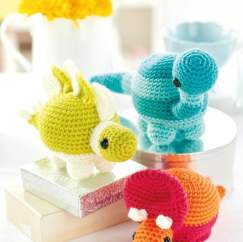
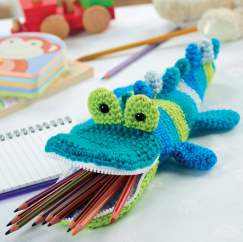


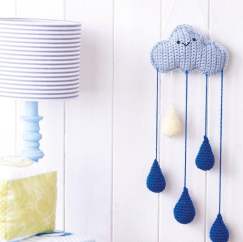
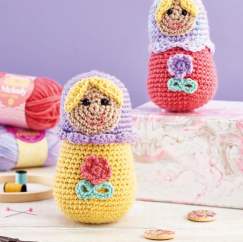

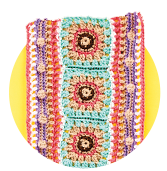 Crochet-along
Crochet-along
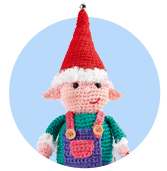 Christmas
Christmas
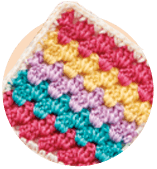 Granny Squares
Granny Squares
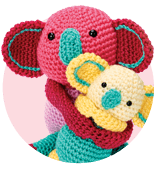 Toys
Toys
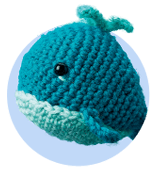 Amigurumi
Amigurumi
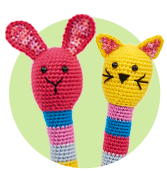 Baby
Baby
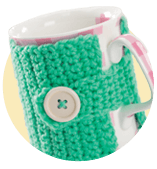 Homewares
Homewares


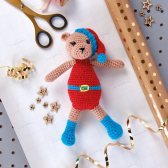







Share